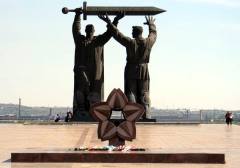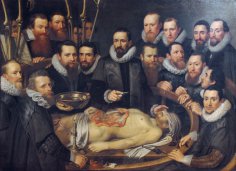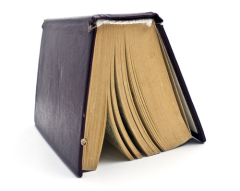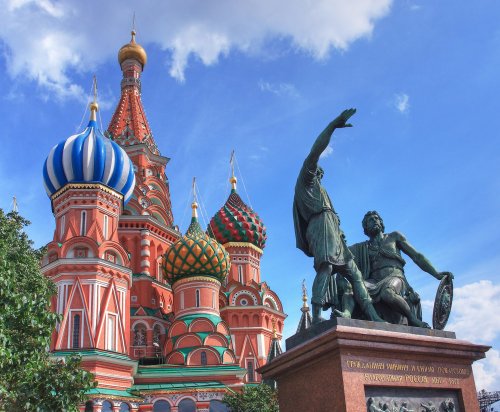
Lev Golovnitsky will forever remember the day his father, a locomotive engineer, returned home from work. From his iron chest, he pulled out a carefully wrapped copy of “How the Steel Was Tempered” and placed it on the table. His father didn't go to bed, as he usually did after a trip, but sat down to read. That evening, his mother picked up the book, and in the morning, so did his older brother. Lev stared long at the author's portrait: a lean, masculine face, unusual eyes that seemed to hear more than they saw…
Nikolai Ostrovsky became the first writer of his childhood to be read syllable by syllable. Over time, Lev Nikolayevich understood and felt the symbolic meaning of the book's title. In the yard, he played Pavka Korchagin with the boys: they raced, riding fragrant poplar shoots, chopping down hordes of dandelions with wooden sabers. Carving wooden horses for the children's Red Cavalry became Golovnitsky's first step into sculpture.
Lev Nikolayevich's older brother, Yuri, was a keen artist and attended the art studio at the children's art school. In 1943, Yuri Golovnitsky went to the front and died fighting at Kursk. Lev took his brother's death hard… But the war brought mourning not only to the Golovnitsky family. Losing brothers and fathers, the wartime boys matured quickly. They helped their elders as best they could. Rarely were their mothers seen at home, at their workbenches. And on anxious evenings, they drew by the light of a kerosene lamp. And there was no mercy for the enemy beneath the stubs of pencils.
Favorite childhood heroes also became the subjects of Golovnitsky's first independent works. At the Saratov Art School, he chose the image of Nikolai Ostrovsky as the theme for his diploma thesis. This was followed by the work “Pavka Korchagin.” These works depicted the warrior writer and the well-known literary figure. But Golovnitsky also wanted to create a composite image of an unnamed hero of the Revolution and Civil War. His older brother served as the prototype for this sculpture—his image constantly loomed before his eyes, reminding him of the thousands upon thousands of seventeen-year-olds who gave their lives for the future. Thus, the image of “Orlyonok” was born.
sculptor L. N. Golovnitsky in his workshop
This monument was erected in Chelyabinsk on the Scarlet Field, where, in the pre-revolutionary years, the blood of freedom fighters was shed when gendarmes and Cossacks dispersed a workers' demonstration. The monument was unveiled in 1958. For 50 years, a teenager wearing a fur hat with a ribbon, a long overcoat, and shoes from someone else's feet has stood on a granite pedestal—proud and unbowed.
Many of Golovnitsky's works commemorate the war and the Soviet soldiers who paid with their blood and lives for the right to freedom. During the war, Chelyabinsk became a forge city—a “Tank City,” as it was called. A tank brigade was formed from the city's factory workers. On May 9, 1943, a ceremonial sendoff of Chelyabinsk volunteer tank crews to the front took place on Kirov Street. Lyova stood in a long bread line, witnessed everything, and remembered it well. Thirty years later, a monument was erected at the historic site to commemorate this event and the heroic tank crews. The worker climbed onto the tank's armor, still wearing his overalls and not fully dressed as a tanker. But he was already calling for battle, for the destruction of the enemy…
The best volunteers were selected because there were a hundred times more applicants than needed: every worker with a reservation considered it a duty and an honor to join this tank brigade. All combat vehicles were manufactured with funds raised by the workers of the Urals. The Chelyabinsk residents, serving in the Ural Tank Corps, began their military career near Orel and ended it as guardsmen in Prague, where our T-34 remains a monument for centuries.
There is perhaps no more sacred place than the soldiers' graves, of which there are many in Chelyabinsk, which became a hospital city during the war. The city cared for thousands of wounded, with one school after another being converted into a hospital. And here, deep in the rear, the war caught up with the soldiers—many suffered fatal wounds. These soldiers were of various nationalities, but the Russian Ural land welcomed them. The birch trees rustle above them in cherished memory.
In 1975, Lev Nikolayevich and his wife, the sculptor Enrica Golovnitskaya, created a monument they named “Memory.” It stands on a mound in a military cemetery. Two women in mourning attire—Mother and Wife—hold a soldier's helmet. This is not only grief and memory. It is also a hymn to Russian women.
The memorials in Volgograd and Berlin, created by E. V. Vuchetich, are well known. The Motherland on Mamayev Kurgan raised her sword against the enemy to liberate our land. The soldier in Treptower Park lowered his sword, slashed the hated swastika, and crushed fascism. But before the Sword could be raised for a just cause, before it could be victoriously completed, the great historical mission, it first had to be forged. In other words, Victory was also forged in the rear.
History itself dictated that the monument should be erected at the main arsenal of Victory Day – in the Urals, at the legendary Magnitka. Here, most of the steel for the Motherland's armor shield was smelted: every second tank, every third shell, was made from Magnitogorsk ore. It was here that the Sword of Victory was forged. A significant part of the work of wartime boys went into creating our army's formidable weapon. And in the sculptural composition, Golovnitsky wanted to convey the fate of the country through their difficult lives – the stages of its history and the role of young citizens in them.
The monument consists of three parts. The central fragment is titled “The Red Flag. Year 1917.” A factory boy, following orders from his elders, climbs a chimney to hoist a red flag. The wind threatens to knock him down, but he has already reached the top and secured the flag. He is performing a serious and dangerous adult task, but on the verge of boyish daring and a conscious courage. How many such young revolutionaries were there, involved in great events.
The monument “Rear to Front.” Unveiled in Victory Park in 1979. Sculptor: L. N. Golovnitsky.
The left side of the monument is titled “The First Five-Year Plans. 1930.” A village boy in bast shoes sits down to rest on a wheelbarrow. He, too, is a participant in the heavy labor: there are few machines yet, and much has to be done by hand. But the boy uses his rare moment of rest to study—he holds an open book in his hands. Perhaps he's a future poet, perhaps a designer.
The triptych concludes with the sculpture “From Ural Ore. 1941.” A young vocational school student lifts a shell blank for an artillery shell to secure it to a lathe. A crate stands beneath the boy's feet: he's still a bit short, but he's engaged in a truly adult task. And this is exactly how it was in the Urals—boys rode to work on scooters. The director of one factory even set aside a special parking lot for their “transport.”
No matter how difficult life may be, childhood remains childhood; everyone still has one. And sculptor Lev Nikolaevich Golovnitsky beautifully captured this in his monuments.





